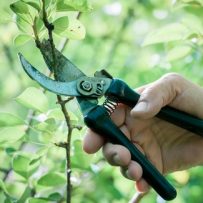Bigger Gardens a Top Priority for Home-hunters
A survey by Rightmove of over 4,000 home movers has revealed that having a bigger garden, or at least access to one, is now the top priority for both buyers and renters.
With most people now spending more time at home as a result of the lockdown, priorities have changed when home hunting and access to outdoor space has become more important than ever.
63% of buyers and 59% of renters said they now wanted a bigger garden or access to one in their next home, achieving a higher score than any other priority.
Searches by buyers for homes with gardens are up 42% in May 2020 compared to May 2019 and for renters they are up a massive 84%.
Furthermore, of the new life interests that people say they plan to continue after lockdown, 82% said gardening and 89% exercising outdoors.
Clearly the challenging times created by the pandemic and lockdown has reinforced the importance of gardens in enriching our lives and improving our mental health and wellbeing. Whether as a tranquil retreat, for sunbathing, exercising, alfresco dining, connecting with nature, growing food, nurturing plants, increasing bio-diversity or simply listening to bird song, gardens are good for the soul and we need them now more than ever.
Source: Rightmove survey

